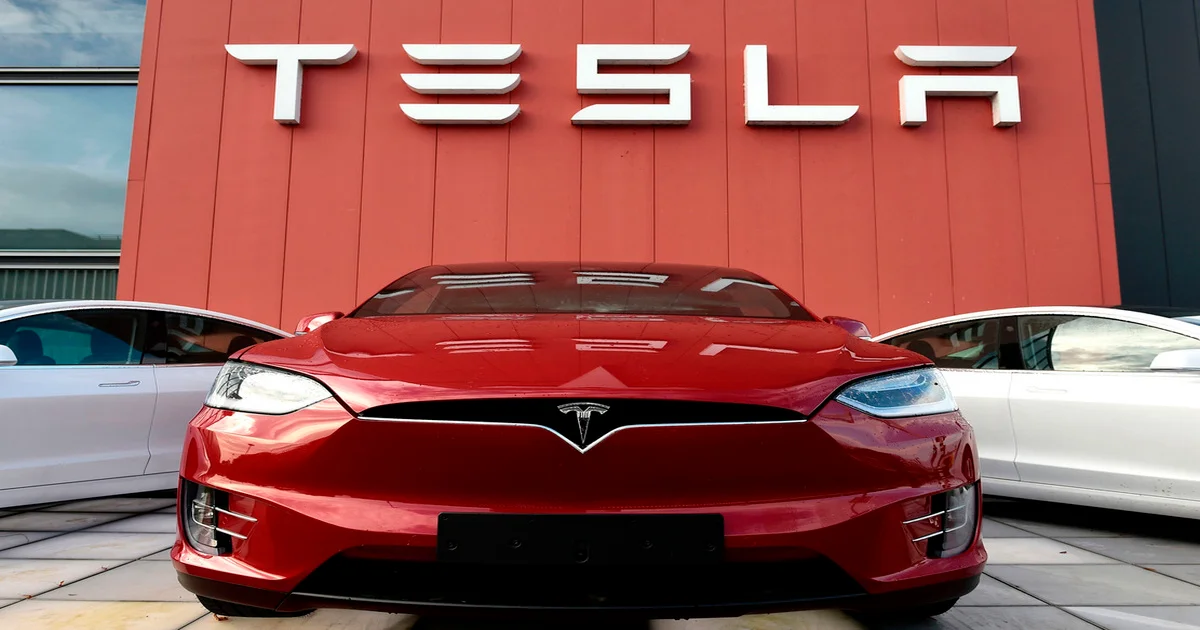Tesla Car image credit-pxhere.com
Tesla is gearing up for a pivotal moment in its history with the unveiling of its highly anticipated robotaxi, known as the Cybercab, set to be showcased by CEO Elon Musk at Warner Bros. Studios in Hollywood on Thursday. This project has rekindled excitement around Tesla, despite slowing enthusiasm for electric vehicle (EV) growth. Investors are eager to see whether this vision can truly revolutionize the autonomous vehicle space, which has been plagued by challenges and skepticism.
The Cybercab: Tesla’s Autonomous Vision
Tesla’s Cybercab aims to be a fully autonomous vehicle, designed to operate as part of a ride-hailing platform, similar to a combination of Airbnb and Uber. Tesla owners would be able to list their vehicles on this network, allowing them to earn money when their cars operate as self-driving cabs.
Unlike many of its competitors, Tesla relies on cameras and artificial intelligence (AI) for self-driving capabilities, steering clear of expensive radar and lidar systems used by companies like Waymo and Zoox. Musk believes that with ongoing improvements in AI, Tesla can bypass the need for these costly sensors, setting it apart in the race for full autonomy.
Investor Expectations: From Vision to Reality
Investors are eager to see more than just a concept on Thursday. Musk’s ambitious vision is to transform Tesla from a carmaker into what he calls an AI robotics company, with a business model that revolves around autonomous services. He estimates that the robotaxi business could drive Tesla’s valuation to an eye-popping $5 trillion, up from its current $750 billion.
However, some investors are cautious. “They need to get going because this has been discussed and rumored for a while,” said Elliot Johnson, Chief Investment Officer at Evolve ETFs, which holds investments in Tesla. Johnson and others don’t expect any immediate financial impact, likely seeing this as a 1-2 year venture before it materializes.
The Challenges: A Difficult Road to Autonomy
Tesla’s foray into robotaxis faces significant hurdles. Musk previously claimed in 2019 that Tesla would have operational robotaxis by the following year—a promise that didn’t come to fruition. Tesla’s Full Self-Driving (FSD) system, which is currently only a partially automated technology, has been under regulatory scrutiny after several accidents, including two fatal ones.
Many analysts, including Toni Sacconaghi of Bernstein, believe that Thursday’s event will focus more on vision than deliverables. Sacconaghi said, “The company has a track record of being overly optimistic, and the details will be crucial.”
There are also concerns about competition. Waymo, Alphabet’s autonomous driving unit, is already operating uncrewed robotaxis that collect fares, and Cruise, General Motors’ self-driving unit, is preparing to relaunch its robotaxis after an accident forced them to halt operations.
Tesla’s Strategy: Cost Control and Existing Platforms
To manage costs, Musk has opted to avoid additional sensors and potentially build the first generation of Cybercabs on Tesla’s existing Model 3 and Model Y platforms. He also plans to leverage Tesla’s vast data pool, collected from millions of cars, to improve the AI driving the Cybercab.
However, moving from Tesla’s current driver-supervised FSD technology to fully autonomous, driverless robotaxis will be a daunting challenge. Regulatory approvals, safety tests, and technological advancements are all substantial barriers that Musk will need to overcome.
Garrett Nelson of CFRA Research emphasized that this leap to autonomy is far from guaranteed. “We think this is still several years away and numerous technological hurdles, safety tests, and regulatory approvals stand in the way,” he said.
Market Impact: A Boost for Tesla Shares
Tesla shares have surged nearly 50% since Musk first announced the shift toward robotaxis in April, despite concerns over the company losing ground in the competitive EV market. While there is excitement around the “We, Robot” event, volatility in Tesla’s stock has hit a two-year high, with analysts warning of potential turbulence in the near future.
Conclusion: A Visionary Gamble
Elon Musk is known for his ambitious goals, and the Cybercab represents another bold step for Tesla. While investors and enthusiasts await the unveiling with high hopes, many recognize the long road ahead in turning Tesla’s robotaxi vision into reality. As the world watches, Tesla’s ability to break into this nascent market could define its next chapter.
FAQs About Tesla’s Robotaxi
Q: What is Tesla’s Cybercab?
Tesla’s Cybercab is an autonomous vehicle designed to operate on a ride-hailing network without a human driver. Owners can list their cars on the platform, earning money by offering rides to others.
Q: How is Tesla’s robotaxi different from competitors?
Unlike other companies that use expensive radar and lidar systems, Tesla relies solely on cameras and AI to power its self-driving technology. This could reduce costs but has raised concerns about safety and reliability.
Q: When will Tesla’s robotaxi be available?
There is no official release date yet. While Musk’s previous estimates suggested operational robotaxis by 2020, Tesla is still working to meet regulatory and technological challenges.
Q: Will the Cybercab be fully autonomous?
The goal is for the Cybercab to be fully autonomous, meaning no driver supervision is required. However, Tesla’s current FSD system is classified as partial automation, and reaching full autonomy may take several more years.
Q: How can I make money with my Tesla on the ride-hailing platform?
Once operational, Tesla owners will be able to list their cars on the Cybercab network, allowing them to earn money by offering rides to others, similar to Airbnb but for autonomous vehicles.
Q: What are the safety concerns with Tesla’s robotaxis?
Tesla’s FSD system has faced scrutiny due to accidents, including two fatal incidents. Ensuring the safety of fully autonomous vehicles remains one of the biggest hurdles for Tesla.
